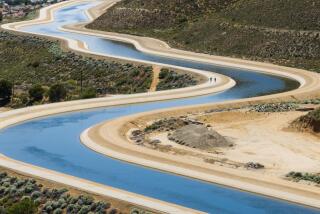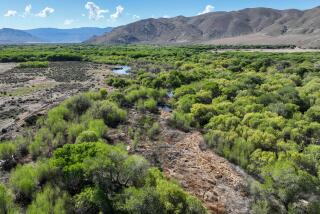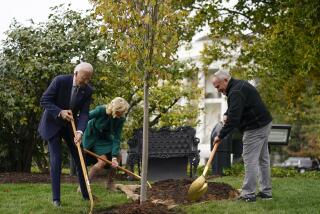Reforestation Efforts Draining Water Supply, UCLA Researcher Says
- Share via
The process of restoring forests in the southeastern United States is draining so much water that conservation efforts should be implemented to avoid droughts, a UCLA geographer says.
Reforestation--planting trees over large areas--is draining ground water that could be used for other purposes in the Southern Piedmont plateau region that includes portions of Alabama, Georgia and the Carolinas.
Forests Expand
“When forests expand, the price for that growth is a decreased water supply,” said Stanley Trimble, a UCLA professor who presented results of his 11-year study at a recent meeting of geographers in Lexington, Ky.
“If forests are allowed to exist at their present size in some areas, they will consume water that society may want to use for municipal and industrial water supplies, navigation and power,” he said.
Foresters have long examined the role of water consumption by trees. But Trimble’s study is the first to show significant decreases of water as a result of reforestation in large river basin areas.
More Water Than Crops
“An average forest in the Southeast consumes roughly a foot--one cubic foot of water for every square foot of forest--more than competing land uses such as pastures or cropland.
“This is equivalent to an average net consumption of about 326,000 gallons of water per acre of forest per year.”
Trimble said that compares to a U.S. per capita water usage of about 150 gallons per day.
“Although we have concentrated on the Southeast, our findings could also apply to other forested areas around the globe,” he said.
Scotland Ban
“In fact, future planting of forests has already been banned in parts of Scotland and a tree tax has been proposed there.”
Much of the data used in the study was from precipitation figures compiled by the U.S. Weather Bureau as well as stream-flow information from the U.S. Geological Survey.
The study region covers approximately 20,000 square miles of forest and pastureland. Trimble said the area is unusual because it has undergone extensive reforestation during this century with large areas of cropland being replaced by forests and pastures.
Quality May Improve
The geographer’s study applies only to water quantity and not to water quality. In an earlier study he found that reforestation and pasture expansion significantly reduced stream sediment and other pollutants.
“Cutting down forests to increase stream flow will almost surely lessen water quality,” he said.
More to Read
Sign up for Essential California
The most important California stories and recommendations in your inbox every morning.
You may occasionally receive promotional content from the Los Angeles Times.










